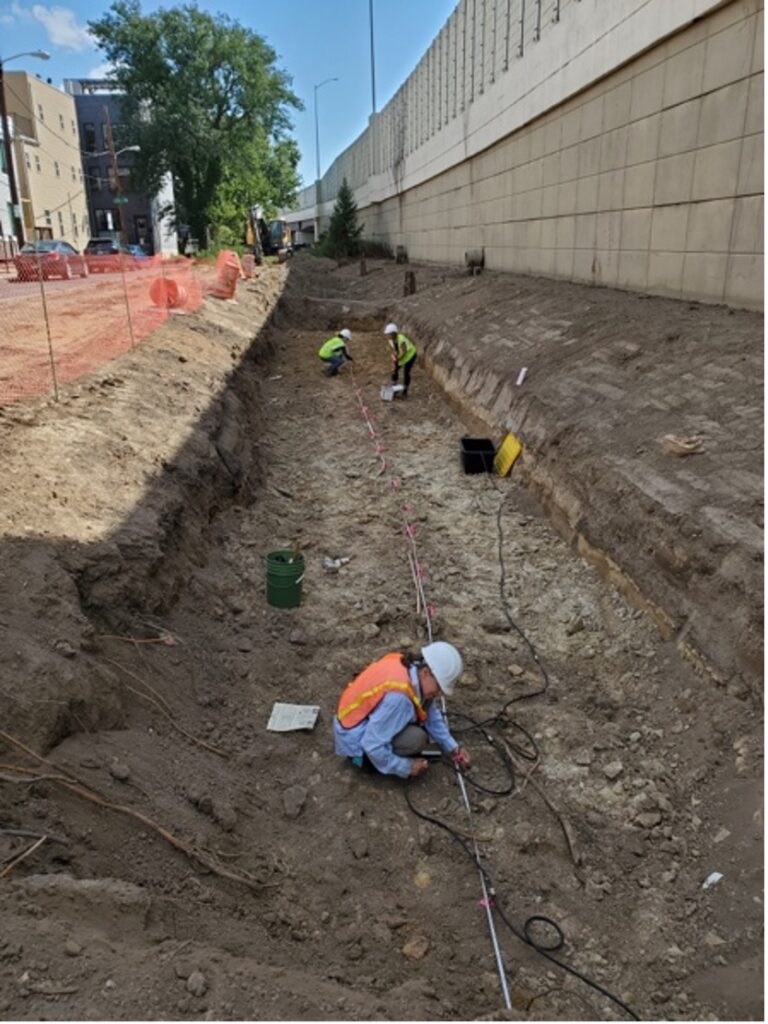For several years now, I have been part of a team of researches from Temple and Villanova universities that is assisting the Pennsylvania Department of Transportation (PennDOT) with the design and monitoring of bioswales, which are landscaped basins being constructed adjacent to I-95 to manage stormwater runoff as part of ongoing renovations to this key north-south highway. The goal of the bioswales is to promote stormwater infiltration, recharging the groundwater rather than routing all of the flow to overburdened sewage treatment plants. Just how much infiltration occurs depends on how easily water percolates into soil underlying the basins.
Infiltration measurements are made to characterize percolation, but given the heterogeneous nature of urban soil, which can contain anything from sand to clay to construction debris, deciding where to make infiltration measures is challenges. Last summer, I tested using electrical resistivity tomography (ERT) to guide these measurements.

Because clay soils have both a lower electrical resistivity and lower infiltration rate than sandy soils, the ideas was to used resistivity images to guide the location of infiltration measurements. As the resistivity cross-section below shows, there was excellent agreement. Where the resistivity was low, so was the measure infiltration.The idea of using resistivity measurements to assess infiltration potential is not new. Many examples can be found in the literature. Here is one recent example. But it was gratifying how well it worked in this instance!

